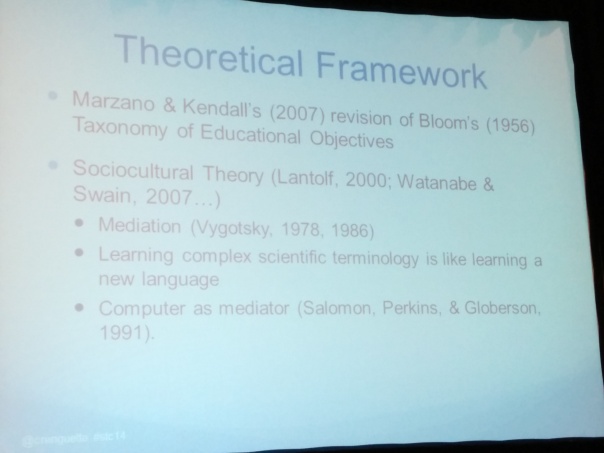Patient Education and Health Literacy (stc14)
This week I’m attending STC Summit 2014, the annual conference of the Society for Technical Communication. Where feasible, I’ll take notes from the sessions I attend, and share them on this blog. All credit goes to the presenters, and any mistakes are mine.
This session appeals to me as something a little different. Corinne Renguette discusses “Patient Education and Health Literacy: Examining Interview Discourse”. Corinne is from the Indiana University-Purdue University Indianapolis.
In particular, I’m interested in this bullet point from her session summary:
[Attendees will] understand more about issues in patient education and informed consent and the benefits of collaboration in this interdisciplinary field.
Background and definitions
Corinne’s session is about a collaboration between academia and industry, which she feels is interesting to technical communicators.
The aim of the study is to focus on the learner (patient), looking at the language the patients use when they’re discussing a particular procedure, both before and after using the learning materials. The subject matter was obesity and bariatric surgery.
The patient education materials were multimodal.
Corinne talked about the complex terms used in the study, and defined some of them for us. One of the terms is Body Mass Index (BMI) as used to define obesity. The participants in this study had been classified as severely obese, and had high risk of morbidity (death) due to their obesity.
Another term is “health literacy”: The word literacy has a complex definition. You need to define the difference between acquisition (gaining knowledge without conscious learning) and learning (gaining conscious knowledge through teaching).
In the US, over 90 million people have limited health literacy, meaning that they don’t understand basic health information. This results in poor patient health outcomes. Patients need to be able to read and understand health literature, and also be able to make decisions and act upon them.
An example is filling out informed consent forms. Bariatric surgery is major surgery and can have a big effect on someone’s future.
Theoretical framework
It’s hard to measure what someone has learned. Often you have to use a test or questionnaire. In this case, Corinne looked at the language people used after doing the learning.
Because of the combined disciplines in this study, Corinne used a blended theoretical framework to see if the learning objectives were met. She discussed the specific theories used. I took this screenshot of her slide:
Assessing the outcomes
Corinne looked at the interview discourse. The assumption was the the patients’ answers showed their ability to recognise and recall the information about bariatric surgery.
Methodology
The clinic selected a representative sample of people who would normally be offered the surgery. Corinne coded the pre-test and post-test answers to judge the improvement. For example, she used a plus sign to mean an improvement, a minus sign for a deterioration in the response, and an equals sign if the response was of the same quality.
The entire study happened during the same day. The same questions were asked in the pre-test and the post-test sessions. The test group and the control group had the same questions.
Results
These were the results as shown in the post-test versus pre-test answers:
- 52% of the test participants gave improved answers.
- 23% of the control group gave improved answers.
- More than half of the test participants improved their answers in 53% of the questions.
- More than half of the control group improved their answers in 16% of the questions.
Corinne now showed us some detailed responses from three of the questions. This was very interesting. For example, we saw new technical vocabulary and lengthier procedural information in the post-test answers. People might struggle with the exact terms, but clearly had a more specific knowledge of the procedure that would be performed on them (the bariatric surgery). When asked how much water you should drink after your surgery, the test group showed a 94% improvement, while 0% improved their answer in the control group. This is an important result for post-surgery health.
Conclusions and ideas for more studies
The test groups shows consistently better results. The multimodal educational materials may have helped to mediate the learning processes. More studies are required, because this was a small control group.
Other studies could add social elements such as study groups, online chats, and experiential learning projects in the classroom.
Corinne pointed out that we, as technical communicators, could ask ourselves how we could work on a partnership to test our communicational materials and what types of collaboration could be useful to us.
Thanks Corinne
I didn’t have time to take notes from everything Corinne said. This was a fast-paced and interesting session, offering a glimpse into the world of academic studies. Thanks Corinne!
Posted on 22 May 2014, in STC, technical writing and tagged STC Summit 2014, stc14, technical communication. Bookmark the permalink. Leave a comment.



Leave a comment
Comments 0